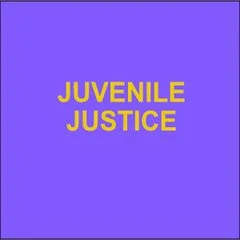By Curtis Smith IV, Laura Whitaker, Stephanie Brooks Holliday
The overrepresentation of queer youth in the juvenile justice system in Los Angeles County underscores the need for tailored service strategies to meet this population's needs. However, given the lack of concrete guidance within the Juvenile Justice Crime Prevention Act's (JJCPA's) Comprehensive Multi-Agency Juvenile Justice Plan, JJCPA-funded programs may require additional guidance on how to best achieve this goal. Staff members of these programs often have competing priorities and may find it challenging to find practical information to guide their services.
In this report, the authors summarize the peer-reviewed literature related to queer at-promise and juvenile justice-involved youth to present a high-level summary of the pathways through which these youth enter the juvenile justice system, the common issues that they experience while in the system, the needs that practitioners should be aware of when serving these youth, and potential strategies to better support queer youth when providing services.
The authors go on to describe the existing challenges and practices that JJCPA-funded programs experience when aiming to serve queer youth. The authors then draw on the expertise of local organizations that serve queer youth who intersect with the juvenile justice system and identify practical solutions to enhancing care for these youth.
Key Findings
Queer youth who are at-promise (i.e., experiencing factors that place them at risk for involvement in the juvenile justice system) and those involved in the juvenile justice system often experience various forms of adversity, such as parental rejection, houselessness, dual-system involvement, school discrimination, mental health challenges, and criminal justice system discrimination.
Staff of programs funded by the JJCPA in Los Angeles County are interested in meeting the needs of queer youth; however, they may feel unprepared to do so.
Key informants from queer-serving organizations suggest that JJCPA-funded programs serving queer youth should foster a safe and affirming environment, integrate school and family systems, consider youths' intersectionality, and implement collaborative care models.
Recommendations
JJCPA-funded programs should develop partnerships with queer organizations to support at-promise and justice-involved youth with clear goals and transparency about such needs as training or consultation.
JJCPA-funded programs should build lasting relationships through coaching partnerships for sustained impact, facilitating collaborative workshops, and integrating partnerships into staff onboarding and training.
JJCPA-funded programs should integrate queer identity into services while considering other identity aspects and broader needs.
JJCPA-funded programs should adjust approaches based on diverse identities, ensuring that resources and services are available.
JJCPA-funded programs should offer queer-specific services when needed, using various modalities, such as virtual options.
JJCPA-funded programs should evaluate and integrate inclusive policies, ensuring that such policies are communicated and reinforced with staff.
JJCPA-funded programs should document policies for accessibility, detailing application, evaluation, and consequences to emphasize their commitment to diversity, equity, and inclusion.
JJCPA-funded programs should ensure that staff reflect and support the needs of queer youth through diverse representation and expertise.
JJCPA-funded programs should increase queer representation among staff to create safe spaces and connect with relevant resources.
JJCPA-funded programs should use staff to coordinate services across systems, considering the diverse needs of queer youth.
Santa Monica, CA: RAND, 2025, 33p.


